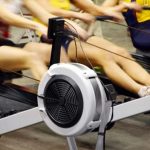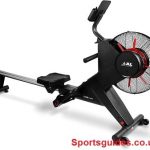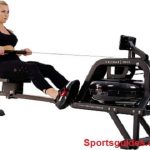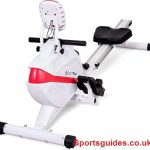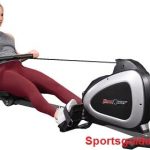As an Amazon Associate, I earn from qualifying purchases.
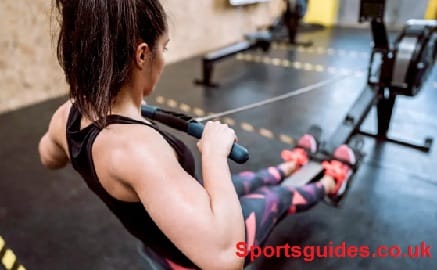
Rowing is a low-impact exercise that targets multiple muscle groups, including your legs, arms, and back. It’s an excellent way to burn calories, improve your cardiovascular health, and build strength. However, using a rowing machine can be tricky if you don’t know how to do it correctly. In this guide, we’ll take you through the basics of using a rowing machine and help you avoid common mistakes.
Understanding the Parts of a Rowing Machine
Before you start using a rowing machine, it’s essential to understand its parts. A rowing machine consists of several components, including the seat, footrests, handle, resistance mechanism, and computer monitor. The seat is where you’ll sit during the workout, and the footrests are where you’ll place your feet. The handle is what you’ll pull back and forth, and the resistance mechanism determines how challenging the workout is. The computer monitor displays essential information such as your time, distance, and calories burned.
How To Use A Rowing Machine: A Beginner’s Guide

Setting up the Rowing Machine
- Adjust the Footrests: Sit on the seat with your feet on the footrests. Adjust the footrests so that the straps are snug around your feet.
- Adjust the Resistance: Most rowing machines have a resistance dial or lever. Start with a low resistance setting and gradually increase it as you get more comfortable with the machine.
- Set the Damper: The damper controls the airflow into the resistance mechanism. A higher damper setting means more air flows in, making the workout harder. Start with a damper setting of 3-5 for most workouts.
- Choose Your Workout: Most rowing machines have preset workouts or allow you to create your own. Choose a workout that’s appropriate for your fitness level.
Proper Rowing Technique
- Sit on the Seat: Sit on the seat with your feet firmly planted on the footrests.
- Grab the Handle: Grab the handle with an overhand grip and keep your arms straight.
- Drive with Your Legs: Push off with your legs and slide back on the seat. Keep your back straight, and your core engaged.
- Pull with Your Arms: Once your legs are fully extended, pull the handle towards your chest, keeping your elbows close to your body.
- Return to the Starting Position: Extend your arms, and then bend your knees to return to the starting position.
Common Mistakes to Avoid
- Hunching Your Shoulders: Keep your shoulders down and relaxed throughout the workout.
- Using Your Arms Too Much: The primary power source for rowing should be your legs, not your arms.
- Not Engaging Your Core: Engage your core muscles to keep your back straight throughout the workout.
- Rushing the Recovery: Take your time when returning to the starting position to ensure proper form and avoid injury.
- Holding Your Breath: Breathe steadily throughout the workout to keep oxygen flowing to your muscles.
Workout Tips for Beginners
- Start Slow: If you’re new to rowing, start with a 10-15 minute workout at a moderate pace.
- Focus on Form: Proper form is essential for avoiding injury and getting the most out of your workout. Take your time and focus on each step of the rowing technique.
- Mix Up Your Workouts: To avoid boredom and plateauing, mix up your workouts with different resistance levels and intervals.
- Set Goals: Setting specific goals, such as rowing a certain distance or burning a certain number of calories, can help you stay motivated and track your progress.
Advanced Rowing Workouts
- HIIT Intervals: Alternate between short bursts of high-intensity rowing and longer periods of lower intensity.
- Pyramid Workout: Start with a short, high-intensity row, then gradually increase the time and intensity before working your way back down.
- Tabata Workout: Alternate between 20 seconds of intense rowing and 10 seconds of rest for four minutes.
Benefits of Using a Rowing Machine
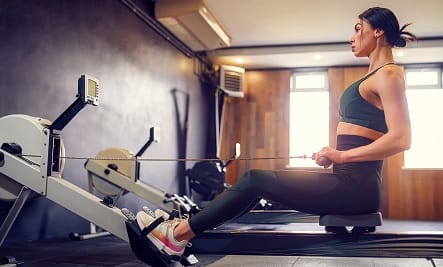
- Low-Impact: Rowing is easy on the joints and ideal for people with knee or hip problems.
- Full-Body Workout: Rowing targets multiple muscle groups, including the legs, arms, and back.
- Cardiovascular Health: Rowing can help improve heart health, lung capacity, and endurance.
- Weight Loss: Rowing is a great way to burn calories and lose weight.
- Mental Health: Rowing can reduce stress, improve mood, and boost mental clarity.
Maintaining Your Rowing Machine
- Keep it Clean: Wipe down the machine after each use to prevent dust and dirt from building up.
- Check the Bolts: Make sure all the bolts and screws are tight to avoid any wobbling or loosening of the machine.
- Lubricate the Chain: Keep the chain well-oiled to ensure smooth and consistent rowing.
- Store Properly: If you’re not using the machine for an extended period, store it in a cool, dry place to prevent any rusting or damage.
FAQs
Is rowing a good workout for weight loss?
Rowing is an excellent workout for weight loss because it burns a significant amount of calories while also building muscle. It’s important to pair rowing with a healthy diet to see the best results.
How often should I use a rowing machine?
It’s recommended to use a rowing machine at least three times a week to see results. However, the frequency of use will depend on your fitness goals and personal schedule.
Can I use a rowing machine if I have joint pain?
Yes, rowing machines are low-impact and can be a great option for people with joint pain. It’s important to start with a lower resistance level and build up gradually.
Can I use a rowing machine if I’m pregnant?
It’s always best to consult with your doctor before starting a new workout routine during pregnancy. In general, rowing machines can be safe during pregnancy as long as you listen to your body and avoid overexertion.
Conclusion
Using a rowing machine can be an effective way to get a full-body workout and improve your cardiovascular health. By following proper technique, avoiding common mistakes, and gradually increasing resistance and intensity, you can maximize the benefits of this low-impact exercise. Remember to mix up your workouts, set goals, and maintain your machine to ensure a safe and effective workout.
